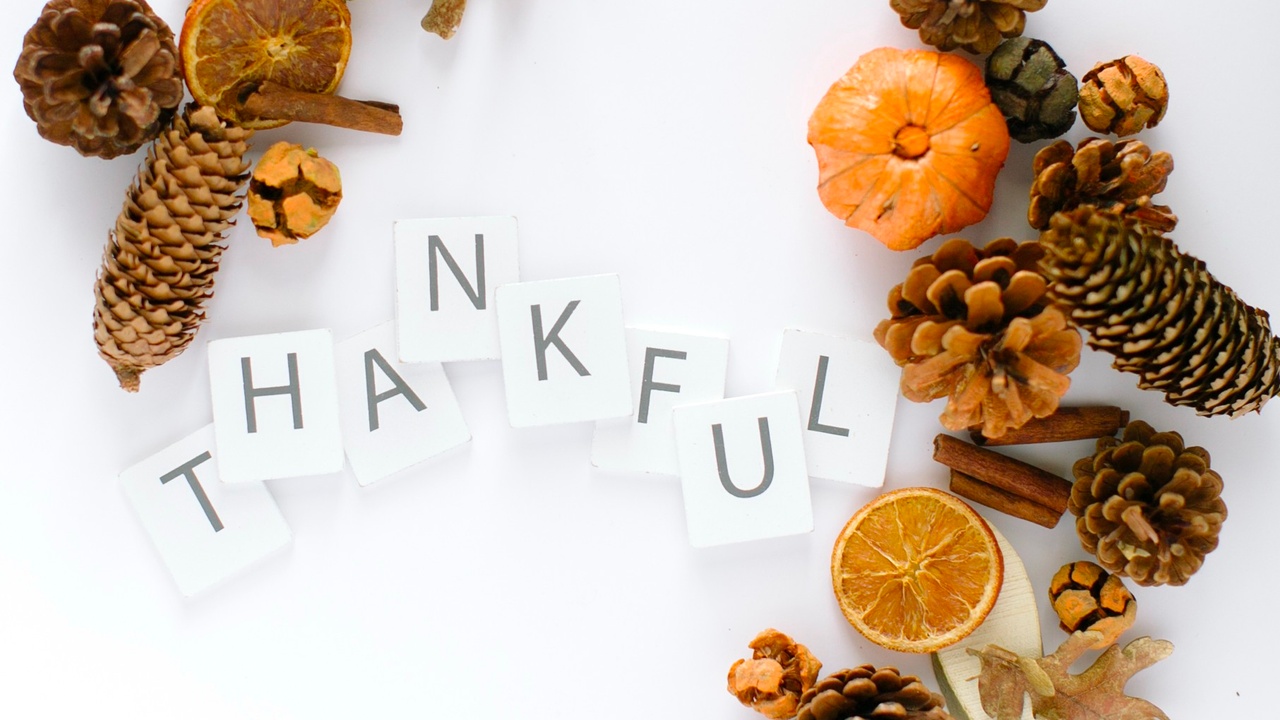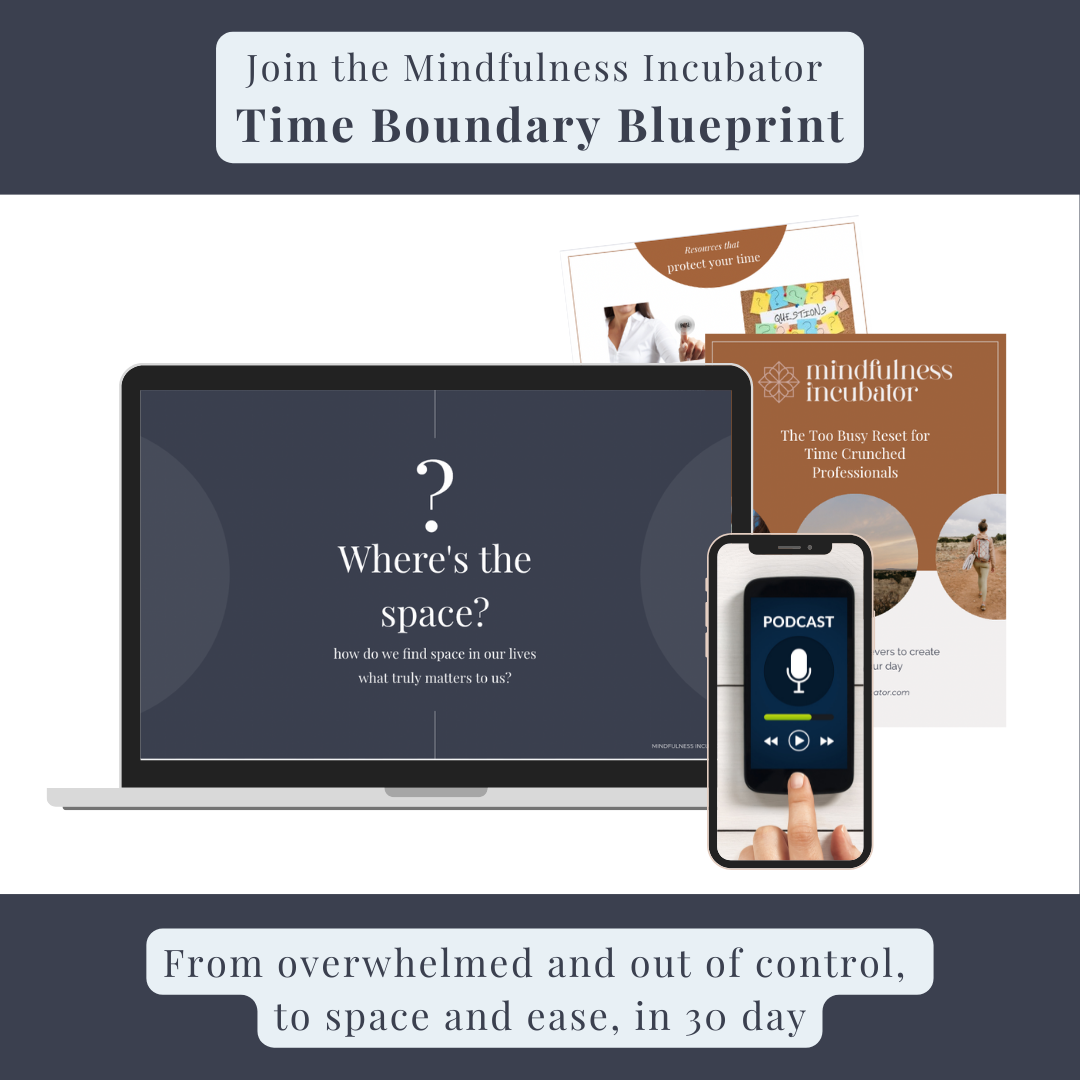Thankful for Boundaries this Thanksgiving
Nov 05, 2022
In just a few weeks, 62% of Americans will be celebrating Thanksgiving, the most important national holiday of the year in the US (at least, according to Statista).
Holiday celebrations of all kinds can be a source of comfort and joy, including wonderful opportunities to connect with loved ones, honor family traditions and give back to the community. Unfortunately, those feelings are not universal, and even for those who find joy during the holidays, it’s not without accompanying, more complex feelings. According to NAMI, holidays generate feelings of “too much pressure” for 63% of us and for 57%, they create “unrealistic expectations”.
But fear not, easier, more spacious, and intentional holidays are within reach. In today’s blog post we outline seven strategies to help transform your experience. You might think it’s a bit early for a Thanksgiving, or a Holiday post, but it turns out one of the strategies is planning ahead, so here we are. And make sure you snag our free downloadable PDF to work through these steps.
7 Strategies for a Mindful Thanksgiving Holiday
Strategy 1: Set an intention
We’ve talked about the resilience boosting impacts of setting an intention before. You can apply that same concept to your holidays. Spend some time thinking about what you want. Here are a few questions to get you started. You can reflect on them in your mind, or journal using these as prompts:
- How do you want to feel during the holiday? For example: peaceful, connected, joyful, stuffed full of turkey, calm, at ease, well rested, active, accomplished, something else entirely? Choose one feeling that you most want to anchor on.
- What matters most to you for the holiday? Is it rest and renewal? Connecting with loved ones? Contribution to your community? Choose one thing to be at the top of the list.
Now write an intention that captures your reflection. If you need an example of an intention, here are a few:
- My intention is for a low key Thanksgiving where we all feel relaxed. We sleep in, order takeout, and spend time in our pajamas.
- My intention is for a connected Thanksgiving, spending as much time as possible with family and loved ones, being fully engaged with them.
- My intention is for a balanced Thanksgiving, where I meet my commitments while staying true to my needs and my limits.
Strategy 2: Create your “yes” list
Now that you have a sense of your intention, think about what kinds of experiences, moments, or activities would help in achieving it. Are there things you’d really like to do? Some examples might be:
- A full on Thanksgiving meal with a table full of people
- Plenty of downtime and unscheduled space
- Hallmark Christmas Movies and hot cocoa
- Creative time like crafts, puzzles or games
- Time outdoors, in nature, disconnected
Strategy 3: Create your “no” list
What might you want to keep out during your holiday? Are there things or experiences you want to avoid or minimize? Examples might be:
- Work, being “online and accessible”, being on your device (phone, computer).
- Last minute errands, preparation or shopping. Feeling hectic and behind.
- Taking on too much, being frustrated that you’re “doing it all”.
- Being overscheduled, back to back, or with activities or to-dos every day.
Strategy 4: Plan ahead
How can you get more of what you want, and less of what you don’t? Are there things you can start planning now in order to create an experience that’s more aligned with your intention? Examples might include:
- Review your commitments, and cancel anything that will make you feel like you’re rushing. Alternatively, shift timing so you have more ease between commitments.
- Plan your menu, and pre-order your groceries so that you don’t have any last minute gaps. Alternatively, put a calendar reminder to do so when the time is right.
- Think about what you can do to lessen the load. Could you order a premade dessert? Could you ask your guests to pitch in? Can you hire some help for part of the experience so you can get some downtime?
- Book the activities that you really want, like a hike, time outside, craft time, a massage. Make these non-negotiable, and schedule around them.
Strategy 5: Don’t default to yes
We’ve talked about the importance of shifting your default away from saying “yes” before. This can be hardest to do in our personal lives. When a friend, neighbor, parent, cousin, or sibling asks us for something (to attend an event, to help with something, whatever it might be), it can be really hard to not immediately agree. We want to be helpful. We want to make them happy. It’s easy to see how we can get overwhelmed and overburdened. We talked about the importance of shifting our default away from an immediate “yes” in a recent blog post Four Levers to Create Space in Your Life. This is also one of the key concepts we explore in our upcoming program focused on building Time Boundaries. One of the important strategies we cover is building a holding statement to buy you time to consider whether you want to (and can afford to) say yes. A holding statement is your “go-to” to avoid immediately saying yes when you’re asked to take on something new, even when you think you want to do it. Examples are:
- I’m so glad you thought of me, I’ll have to look at our commitments and get back to you.
- Thanks for inviting me! We might already have plans, I’ll check and get back to you.
- I’d love to help, but I’m not sure if I’m available, I’ll get back to you by XX if I can.
A holding statement gives you the time to really reflect before adding more to your plate, and be intentional about where you give your time.
Strategy 6: Be present
Something we hear often from our community is that when things can get busy and hectic, it becomes hard to be present for the moments that matter. We can get overly focused on our commitments, on what’s next, on hosting our guests, on staying on track, on our to-do list. Learn more about how to bring more mindfulness to your holidays by revisiting our 2021 Mindful Holiday Activities Guide, highlighting a range of different ways to be more connected and present.
Strategy 7: Mind your self care
The holidays are often a time where our self care goes by the wayside. Honor your self care rituals, even as your routines change. If you need some support and reminders, our Resilience 101 series has some helpful tools for Journaling, Meditation, Social Connections, Physical wellbeing and of course, Mindfulness.
Holidays can be full of magic, and full of stress. Spending time ahead of time to set an intention, and set yourself up for success, can make a world of difference in creating more mindful, connected, peaceful holidays. Remember, you can follow along in our free downloadable PDF to set yourself up for success.
And if the holidays are really hard for you, and you find yourself in crisis, please reach out for help. There are many resources available, including the National Suicide and Crisis Lifeline.

Want more?
If setting boundaries and creating space for self care is something you are challenged by and would like support improving, join our upcoming program. In this 30 day experience, you’ll learn concrete, actionable tools to take a load off, learn how to confidently develop and exercise time boundaries, and create space for what matters most to you. The program launches Nov 30th and will have limited space, so make sure you get on the waitlist to be the first to know when registration opens!
Want a nudge to be more mindful? Grab the Mindful in 5 Phone Wallpaper!
Never miss a post!
Get notified anytime we have something new.
We hate SPAM. We will never sell your information, for any reason.


